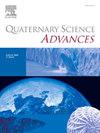智利中部一个世纪海岸变形的古地震学证据:持续的出现和持续的淹没
IF 2.2
Q2 GEOGRAPHY, PHYSICAL
引用次数: 0
摘要
了解与大逆冲地震周期相关的垂直变形对于评估沿海灾害和提高我们对俯冲带构造过程的认识至关重要。然而,这需要超越空间大地测量时代的长数据集。在这里,我们使用来自智利中部前沿海泻湖的古地震学证据,包括岩性和古生态数据,重建了20世纪的陆地水平变化,跨越了1906年和1985年两次(M≥8)大逆冲地震。在20世纪初,硅藻和硅藻种子组合经历了从泥到泥炭的突然岩性变化,记录了相对海平面(RSL)的突然下降。这一环境变化与历史地图中记载的1904年至1914年间泻湖的消失有关,揭示了一个很可能与1906年约0.7米的同震隆起有关的出现事件。在接下来的80年里,硅藻表明相对稳定的RSL条件,这意味着海岸仍然出现。在1944年至1980年代中期,附近的潮汐计记录显示相对稳定的RSL,这部分支持了这一观点。在1985年地震前后,硅藻和潮汐计的记录都表明RSL开始逐渐上升。推断的长期趋势与现代GPS测量结果一致,显示自1997年至今持续的沿海下沉。这种多代理的RSL历史揭示了智利中部俯冲带比以前假设的更复杂的垂直变形模式,在1906年之后持续隆起的80年后开始下沉。我们的发现为了解智利中部和其他地区大俯冲带地震的垂直变形周期提供了关键的见解。本文章由计算机程序翻译,如有差异,请以英文原文为准。
Paleoseismological evidence of a century of coastal deformation in central Chile: lasting emergence and ongoing submergence
Understanding vertical deformation associated with cycles of great megathrust earthquakes is crucial for assessing coastal hazards and advancing in our knowledge of tectonic processes in subduction zones. However, this requires long datasets that extend beyond the era of space geodesy. Here, we use paleoseismological evidence, including lithological and paleoecological data, from a former coastal lagoon in central Chile to reconstruct land-level changes during the 20th century, spanning two great (M ≥ 8) megathrust earthquakes in 1906 and 1985. Diatom and seed assemblages across an abrupt lithological change from mud to peat recorded a sudden relative sea level (RSL) fall in the early 20th century. This environmental shift correlates with the disappearance of the lagoon between 1904 and 1914 as documented in historical maps, revealing an emergence event most likely associated with ∼0.7 m of coseismic uplift in 1906. For the following eight decades, diatoms suggest relatively stable RSL conditions, implying that the coast remained emerged. This is partially supported by the record of a nearby tide gauge showing relatively stable RSL between 1944 and the mid-1980s. Around the time of the 1985 earthquake, both diatoms and tide gauge records suggest the onset of a gradual RSL rise. The inferred long-term trend aligns with modern GPS measurements showing persistent coastal subsidence since 1997 until today. This multiproxy RSL history reveals a more complex vertical deformation pattern than previosuly assumed in the central Chile subduction zone, with subsidence starting eight decades after sustained post-1906 uplift. Our findings provide key insights into the vertical deformation cycles of great subduction zone earthquakes in central Chile and elsewhere.
求助全文
通过发布文献求助,成功后即可免费获取论文全文。
去求助
来源期刊

Quaternary Science Advances
Earth and Planetary Sciences-Earth-Surface Processes
CiteScore
4.00
自引率
13.30%
发文量
16
审稿时长
61 days
 求助内容:
求助内容: 应助结果提醒方式:
应助结果提醒方式:


